There is a lot going on. Man, oh man, are we in the middle of big change. But you all should not freak out about it. It’s all under control.
Forces MAJ sit ready and are watching and controlling everything. It’s all part of the big plan. Don’t freak.
Go have a good meal today.
Treat yourself.
And splurge with an expensive dessert afterwards. Make the night worthy.
Why is China hiding the real state of their economy?
Are you sure you want an answer?
I give you the benefit of the doubt even though such questions are mainly asked to discredit China.
The real reason is that China is of Confucian heritage, it prefers to hide its true strength and let westerners to still think China is poor or weak. The truth may hurt you but I suspect that the Chinese economy is way bigger that is reported. As high as 1.5 times presently.
China’s economy is highly SME dependent while US economy is more MNC and higher concentrated on big companies. That makes accounting and auditing easier compared to China. Many companies in China just operate under the radar. Most don’t pay taxes. Hence the honest truth is a big chunk of China’s production is simply unaccounted.
I do suspect that China simply ignores these figures too as it gives China a cushion and the west lived to underestimate China due to their superiority complex and this underestimation gives China a head start. My guess is by now China’s economy is way bigger than US for the past decade.
The Sopranos – Chris Gives Up Adriana
The most heart wrenching scene in the series. He goes to his Mob Boss, and tells him that his fiance has been working with the FBI. He says that he knows that she must be killed, but that he just cannot do it.
Changes
郭台銘 CEO of APPLE biggest Taiwan supply chains manufacturer suddenly changed tone on China. In the last taiwan presidential election campaign, he claimed that he feeds millions of Chinese workers in his China factories , and the CCP need him instead of the other ways round. He later withdraw from the campaign. Yesterday, he restart his ambitions to run as the coming presidential election candidate. He visited jinmen (the Taiwan controlled island 2km away from the mainland China), this time he said both sides of the Taiwan straits are a family, we all China people (中国人)。it would appear to me that the tide has changed in Taiwan. 快新聞/郭台銘金門發表和平宣言 稱「兩岸一家親」:同為中國人 - 民視新聞網 From HERE
George Carlin – The American Dream
Why is Taiwan’s economy so successful despite Chinese pressure?
So successful? Chinese pressure? Please be patient and read the following story before you draw a conclusion.
This is the real experience in Taiwan shared by Thomas Pauken II:
When visiting Taiwan for a research excursion a few weeks ago, a number of long-time residents on the island advised me to check out the southwestern port city of Kaohsiung. They had described it as a wonderful tourist town. Meanwhile, it’s the second-largest city in Taiwan island; the Port of Kaohsiung has enjoyed an historic reputation as a bustling metropolitan zone for international trade and domestic manufacturing industries. The economic success story of Taiwan in recent decades was achieved largely on account of the island opening up big factories while the Port of Kaohsiung served as a major hub for international shipping trade and as transit points for shippers going to and from Chinese Mainland, Southeast Asia, South Asia, along with the North and South American markets.
I was also working with a documentary team to film the Port of Kaohsiung and the sea for backdrop views. But on May 2, a normal work day for local people, we took a high speed rail from Taipei and reached the Main Station of Kaohsiung at approximately 10:30 am during regular business hours. When arriving at the nearby streets, we did not see a robust trading port city but a dead zone that more closely resembled a ghost town.
In most major cities on weekday mornings, you will observe large crowds of pedestrians rushing to work and traffic jams galore. Yet in Kaohsiung near the port, we saw empty streets, few cars and waited over 20 minutes before spotting a taxi. Many shops were shuttered, while vacant lots were a common sight. Even after our brief filming, we walked the streets at 12:30 pm and could not find a local restaurant to serve customers, including the shops that were open.
We found a taxi to take us to the scenic spots near the port and walked into empty restaurants there as well. It had only one place, but it offered over-priced seafood and no customers could be seen. Accordingly, it was apparent that the economy in Taiwan is hitting hard times and that’s a wake-up call, since the ruling-party DPP (Democratic Progressive Party) has boasted of having close ties with Washington and argued that such strong links have benefited the domestic economy overall.
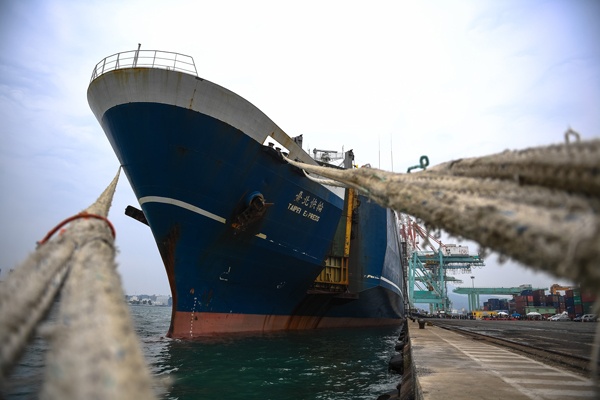
(Photo taken on Jan 19, 2019 shows a freighter at a port in Kaohsiung, Taiwan.)
- Growing concerns over unfair trade deals with the U.S.
During my two weeks in Taiwan, I had spoken with many local residents. The common consensus was that the DPP does have good relations with Washington, but most people on the island have expressed disappointment over Taiwan’s economic ties with the U.S. A few persons had explained that the U.S. Department of Agriculture (USDA) had exploited Taipei’s over-eagerness to please Washington by accepting lopsided trade agreements. Consequently, local farmers, dairy farmers and ranchers suffered the unfortunate consequences. Taiwan was forced to lower tariffs on imported food from the U.S.
According to the USDA Foreign Agriculture Service Website:
“In 2022, the total value of U.S. agricultural and related products exported to Taiwan reached a record $4.4 billion, an increase of 13 percent compared to the previous year. Taiwan successfully remains the 6th largest market for U.S. agricultural & related exports. The record year surpassed the previous record set in 2018 of $4.1 billion. Products in the Consumer Oriented category continue to play an increasingly important role, with beef, poultry, and dairy products hitting new highs. Top 5 U.S. export categories to Taiwan in 2022 included soybeans ($1.1 billion), beef ($746 million), wheat ($379 million), poultry ($287 million), and corn ($268 million).”
Additionally, Taiwan has emerged as a major power player as a manufacturer of chips and semiconductors. TSMC (Taiwan Semiconductors Manufacturing Company) is based in Hsinchu, and has witnessed remarkable development in the past two decades. The company is operating massive foundries to produce semiconductors, which are used for nearly all electronics’ devices. In case you are unfamiliar with semiconductors – they serve as the technological brains for chips. If you are reading this article on your smart phone – there’s a semiconductor integrated into it.
We should take note that TSMC’s largest customer is not the U.S., but Chinese mainland. Washington loves to highlight their close friendship to Taipei but TSMC might not agree. U.S. President Joe Biden signed into law the Inflation Reduction Act, and CHIPS AND SCIENCE Act last year and both bills have harmed TSMC’s business prospects. The Hsinchu-based company has set up plans to open up a new foundry in Arizona, U.S., but the Biden administration has demanded tough terms to approve its application for $15 billion subsidy to the company. Washington has demanded profit-sharing on their returns and requiring the company to reduce its semiconductors’ exports to Chinese mainland.
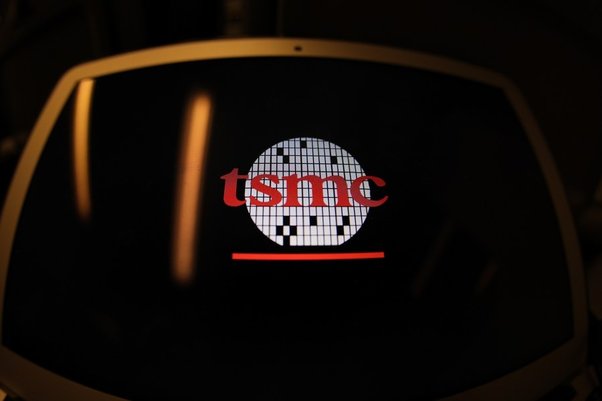
(Photo taken on Nov. 13, 2021 by a fisheye lens shows the logo of Taiwan Semiconductor Manufacturing Company (TSMC) displaying on a laptop screen in London, Britain.)
- Chinese mainland, not U.S., can rescue Taiwan economy
As reported in an article posted by Mobile World Live on April 21, 2021:
“Taiwan Semiconductor Manufacturing Company (TSMC), a major supplier of processors to Apple, Arm and Nvidia, predicted revenue to decline in 2023 as weakening macroeconomic conditions slow end-user demand, after Q1 sales hit the low end of a forecast.
On an earnings call, CEO CC Wei said TSMC expects a low- to mid-single-digit decline in full-year revenue. He said a fabless semiconductor inventory adjustment in the first half is taking longer than previously expected.”
Western media reports routinely blame the lower global demand for chips to explain TSMC’s sudden downturn, but politics deserves greater scrutiny. The Biden administration is punishing Taiwan companies for having strong business ties with Chinese mainland and as a result – Taiwan global trade figures are stumbling. Taiwan had long enjoyed good trade ties with Chinese mainland but Washington’s new restrictions in efforts to push ahead on U.S.-China economic and hi-tech decoupling are placing many Taiwan exporters in a bind.
“China’s economy is strong and it’s Chinese mainland that can save our economy, not the Americans,” a local Taipei resident who wished to be quoted anonymously by China Focus. “Yes, we still love America, but the people in Taiwan are realistic. They know if a severe depression strikes the island, U.S. business will just cash out and leave.”
The person speaking to China Focus said that she is a DPP voter. One wonders whether she will remain a DPP supporter if the Taiwan economy crashes. It should also be noted that southern Taiwan, which includes Kaohsiung, is a regional stronghold for the DPP.
The Port of Kaohsiung is no longer a bustling hub for international trade. The U.S. government has not proven to be helpful economic partner for Taiwan. But does Washington care? We can’t say with certainty that they do.
Seinfeld Risk Management
US railway plan a mere copycat, hard to win favor from Middle East
Seinfeld: Emotional Intelligence – Self Management
Bet you didn’t know…
US spy satellites executed a staggering count of 14 close-in reconnaissance missions on Chinese high-orbit satellites, all within a span of under two years, according to reports in Chinese media.
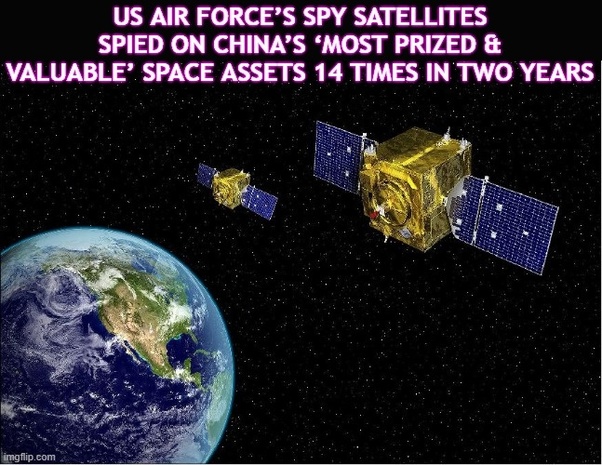
The media report citing a study by Chinese researchers, has revealed that the US Air Force’s Geosynchronous Space Situational Awareness Program (GSSAP) satellites performed a series of maneuvers, repeatedly approaching China’s most prized and advanced satellites in the geostationary orbit (GEO) from February 2020 to December 2021.
In a recent publication in the Chinese-language journal Infrared and Laser Engineering, researcher Cai Sheng and the Changchun Institute of Optics, Fine Mechanics and Physics team expressed grave concerns about the security of Chinese high-value space assets due to the recurring close approaches of the GSSAP satellite.
The study said that through a sequence of tests focused on space attack and defense technologies, the US military has unmistakably demonstrated both their capability and intent to interfere with China’s use of space.
China currently operates a fleet of GEO satellites that serve various functions, including communications, navigation, and remote sensing. GEO satellites are strategically positioned at a fixed point above the Earth’s equator, ensuring that they remain stationary relative to the ground at all times.
GEO satellites are preferred for applications such as communications and broadcast due to their ability to maintain a constant connection with users on the ground, despite being more expensive to launch and operate than Low-Earth Orbit (LEO) satellites.
Many countries utilize these satellites for military communications, surveillance, and critical infrastructure, such as banking and finance systems.
A Beijing-based space scientist, who was not involved in the study, was quoted as saying that close encounters in space are typically shrouded in secrecy due to the military’s perception of such information as sensitive or classified.
The rationale behind this approach is to prevent the disclosure of their capabilities or vulnerabilities to other nations. By maintaining a veil of confidentiality, military forces aim to safeguard their strategic advantages while navigating the complexities of the ever-evolving space domain.
Disclosing such incidents could also risk exacerbating tensions between countries and potentially triggering diplomatic or military conflicts. The timing of China’s decision to release this information remains unclear.
The Changchun-based institute, a subsidiary of the Chinese Academy of Sciences, has a well-established history of contributing to China’s space program by developing laser technology, remote sensing, and space optics.
US GSSAP Satellites
The Chinese study highlights that GSSAP satellites represent the latest generation of space surveillance satellites deployed by the US Air Force. Specifically designed to monitor and track objects in geosynchronous orbit, these satellites are equipped with state-of-the-art technology.
They feature high-resolution optical cameras and advanced electronic surveillance equipment, enabling them to capture detailed images and intercept radio signals from other satellites.
The capabilities of these GSSAP satellites underscore the sophisticated methods the US employs to gather intelligence and maintain situational awareness in the geosynchronous orbit.
According to the Chinese study, on February 26, 2020, a GSSAP satellite carried out a fly-around maneuver specifically aimed at Tianlian 2-01, a satellite integral to China’s Tianlian space tracking and data relay system.
The Tianlian system plays a crucial role in establishing communication links between spacecraft in orbit and ground stations on Earth, serving as a vital support system for China’s human space flight program and other space-related endeavors.
Seinfeld – Effective Product Owner vs. Ineffective Product Owner
Wisconsin Chicken Booyah
(Belgian Beef, Pork, Chicken Stew)
Wisconsin Chicken Booyah is famous in the Fox River Valley region — Green Bay, Wisconsin. Booyah and beer go great together. Booyah King, Bob Baye, of Green Bay, Wisconsin, has been making Booyah since about 1946 in 100-gallon cookers.

Ingredients
- 1 roasting or stewing chicken (about 4 pounds)
- 1 pound beef stew meat, with bones
- 1 pound pork stew meat, with bones
- 1/2 cup minced parsley
- 1 tablespoon salt
- 1 tablespoon rosemary
- 1 tablespoon thyme
- 1/2 teaspoon pepper
- 1/2 teaspoon sage
- 4 cups quartered potatoes
- 2 cups chopped onions
- 2 cups chopped celery
- 1 cup carrots, cut up
- 1 cup green beans, cut up
- 1 cup fresh peas
- 1 cup skinned, seeded, chopped tomatoes
- 2 lemons
Instructions
- Put chicken into a deep kettle with the beef and pork. Cover with boiling water. Bring slowly to a simmer, remove scum from the top, and add herbs and seasonings. Simmer very gently, covered, about 1 hour.
- Remove chicken and, when cooled, take meat form the bones and cut into pieces. Let beef and pork continue to cook until tender, 45 minutes to an hour more.
- Remove and let cool enough to remove meat from bones. Add vegetables to the broth and simmer 5 to 10 minutes.
- Grate lemon rind and set aside; remove white pith and seeds from the lemons, chop the pulp, and add to the broth. Taste for seasoning.
- While vegetables are still crisp, return the meat pieces to the broth to heat through. Serve in large soup bowls and sprinkle with the lemon rind.
“Putin just launched the BIGGEST attack of the war so far | Redacted with Clayton Morris “
The United States wants to finish the war against Russia so it can start a new war with China. So fucking insane.
Are Macron and Xi becoming “dear friends”?
China’s leaders have no private affairs. Keeping this principle in mind will help you understand Chinese political ethics.
China treated Ms von der Leyen almost humiliatingly, but hosted President Macron to a very high standard. That in itself speaks for our disappointment with the EU. During the second term of President Xi, China found it completely impossible for the EU to take on important responsibilities in a multipolar world. We have to hope that France, the great Western power was under the leadership of General Charles de Gaulle, can reclaim their belief in sovereignty, dignity and liberty, and not like Ms von der Leyen willingly serve as a doll for Washington DC.
A united, independent and strong European Union is indeed in China’s interests, but such a European Union cannot become a reality, and it is meaningless to continue to maintain respect for this zombie organization. China hopes that France can take on important responsibilities, including but not limited to geopolitical ones. For example, President Xi made it clear that China is willing to support a peace initiative for a conflict between Russia and Ukraine, but this peace plan should be negotiated by multiple parties and be proposed and led by Europe (especially France). The Western media often speculates that China hopes to expand its influence by leading a peace plan, but those who know us know that it is impossible for China to be willing to lead such a peace plan. Because we believe that European affairs should be resolved by Europeans, including Russia, through consultation.
I say without hesitation that for quite some time to come, China’s primary goal in international geopolitics is to weaken the influence of US hegemony rather than to replace the US and establish a new dominant position. To this end, providing the necessary support to other regional powers interested in rebuilding a multi-polar world is feasible and can ease the pressure China faces in the Pacific.
China sincerely hopes that France can make the right choice for her and her descendants.
The Iron Fist of Russia: Their Unstoppable Military Power Is Yet to Be Unleashed – Seymour Hersh
https://youtu.be/tDox6kyOz8s
Large Russian Missile Strikes in Ukraine Last Night
A massive missile attack by the Russian Armed Forces on the Armed Forces of Ukraine (AFU) took place overnight May 12-13, 2023.
Russian Armed Forces (RuAF) launched a massive missile attack on enemy targets throughout Ukraine. Basically, “Geran” Unmanned Aerial Vehicles (UAV) [Drones] were used.
The first explosions were heard in Kramatorsk and Slavyansk a little after midnight. In Zaporozhye and Nikolaev, explosions thundered in the first few hours of the night.
Afterwards, there were several explosions in the Solomensky district of Kyiv.
Whether this was the result of an air defense operation or whether individual targets were actually hit is currently unknown. Local sources circulated footage of burning equipment, which was recorded in an “ambulance.”
The largest explosions fell on Khmelnitsky.
The Khmelnytsky Instrument-Making Plant “Neva” was struck. The company produced radio engineering systems, equipment for airfields and aircraft.
Judging by the prolonged secondary detonation from the field, there was an ammunition depot at the plant – the UAV warehouse could well have been hit, too.
The authors of the War History of Weapons channel, citing their sources, write (https://t.me/warhistoryalconafter/100760) that the Kation plant in the industrial zone in the south-west of Khmelnitsky was also hit, but we did not find footage confirming the strike on the Web.
In addition, there were reports of explosions in Lvov, but, alas, there is no confirmation.
China JUST Threatened President Biden And USA
China’s communist party president Xi Jinping give Biden and the US military his strongest warning yet.
Representative Cory Bush wants the US government to pay $14 trillion in reparations to black Americans.
MSNBC say president Biden works harder than any other president and you’d be lucky if you could keep up with him.

Regime Change Watch
Tomorrow there will be elections in Turkey and Thailand. In both countries the U.S. would like to see the current opposition win.
Recent pieces in the New York Times leave no doubt about that.
A Crucial Question in Thailand’s Election: Can You Criticize the King?
Liberal voters have intensified their scrutiny of the Thai monarchy in recent years. Conservatives have responded with a campaign to defend the institution at all costs.
An Erdogan Loss in Turkey Would Stir Relief in the West and Anxiety in Moscow
European leaders would be delighted to have “an easier Turkey,” while Russia could lose an important economic and diplomatic partnership should the Turkish leader lose power in Sunday’s elections.
Polls in both countries seem to be between all over the place and tight but my hunch is that the incumbents have a good chance to win.
If the results are to the favor of the current governments the U.S. may well use its well honed color revolution schemes to change the outcomes.
It has done so before, not only in Turkey and Thailand, but also in many other countries.
For a long time, the US Central Intelligence Agency (CIA) has plotted “peaceful evolution” and “color revolutions” as well as spying activities around the world. Although details about these operations have always been murky, a new report released by China’s National Computer Virus Emergency Response Center and Chinese cybersecurity company 360 on Thursday unveiled the main technical means the CIA has used to scheme and promote unrest around the world.
…
For decades, the CIA has overthrown or attempted to overthrow at least 50 legitimate governments abroad (the CIA has only recognized seven of these instances), causing turmoil in related countries. Whether it is the “color revolution” in Ukraine in 2014, the “sunflower revolution” in Taiwan island, China, or the “saffron revolution” in Myanmar in 2007, the “green revolution” in Iran in 2009, and other attempted “color revolutions” — the US intelligence agencies are behind them all, according to the report.The US’ leading position in technologies of telecommunication and on-site command has provided unprecedented possibilities for the US intelligence community to launch “color revolutions” abroad. The report released by the National Computer Virus Emergency Response Center and 360 disclosed five methods commonly used by the CIA.
…
We need therefore to keep an eye open for new regime change attempts.
.
Chris Hedges | The ABYSMAL State of America
https://youtu.be/qHskoWgWIU4
Catzillas: Giant Cats In Urban Landscapes

Indonesian artist Fransdita Muafidin publishes a series of photomontages with kittens and fat adult cats among the urban landscapes from around the world.
More info: Instagram

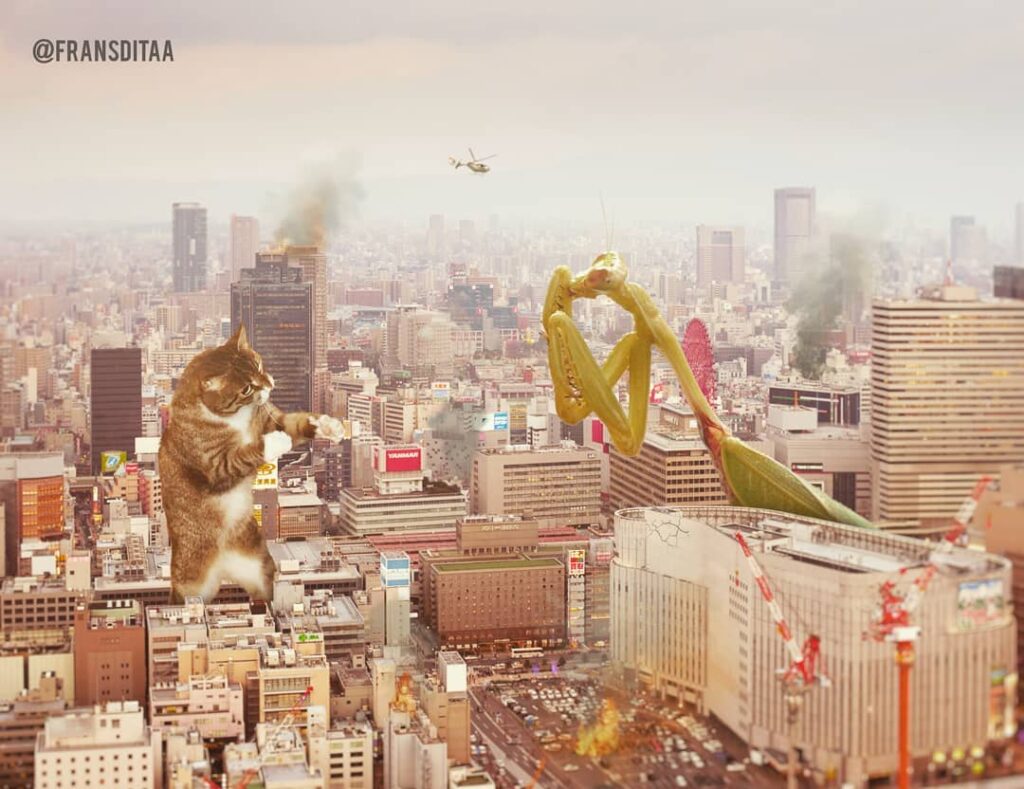
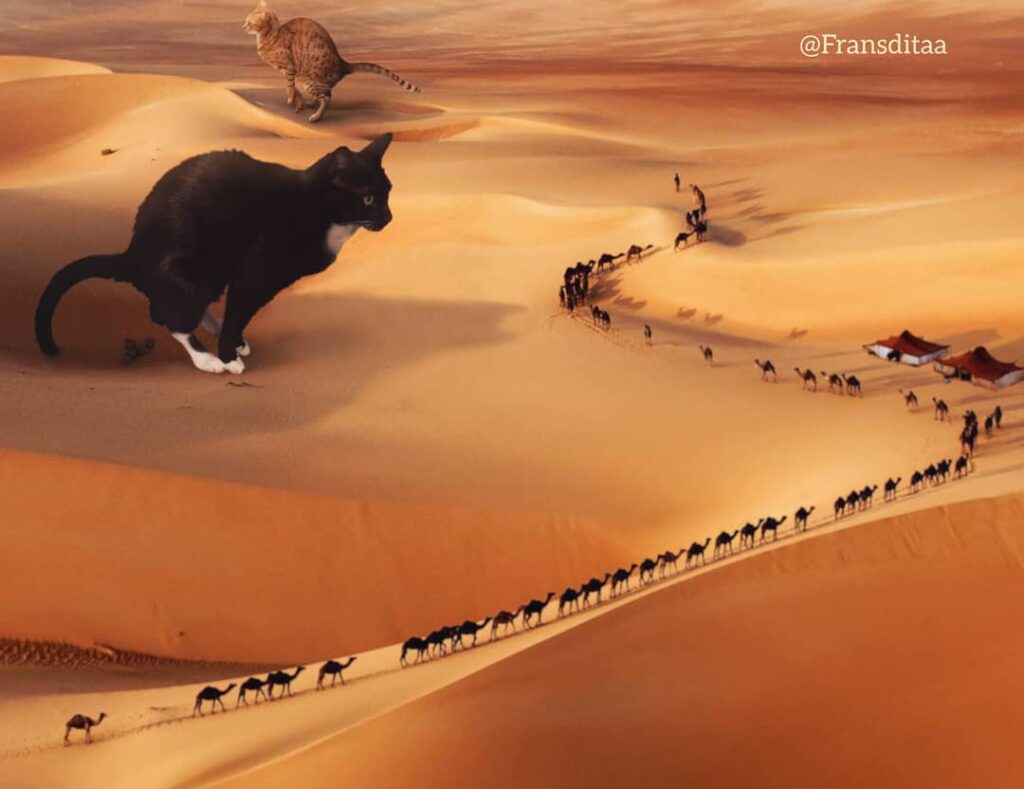




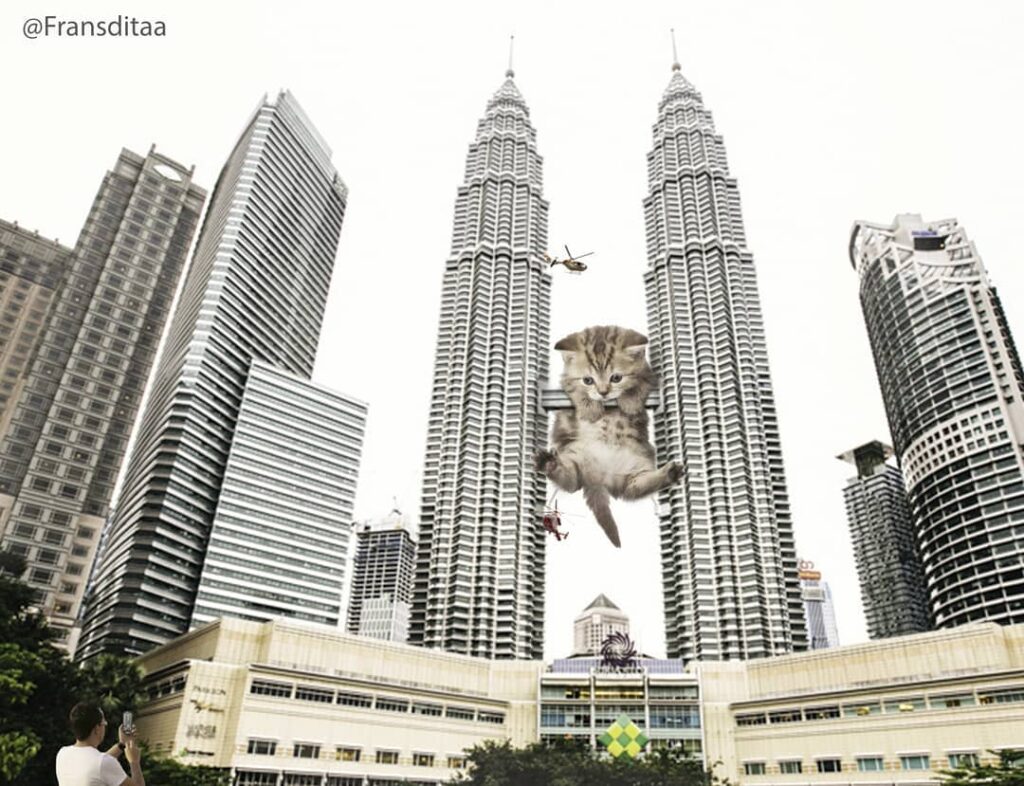


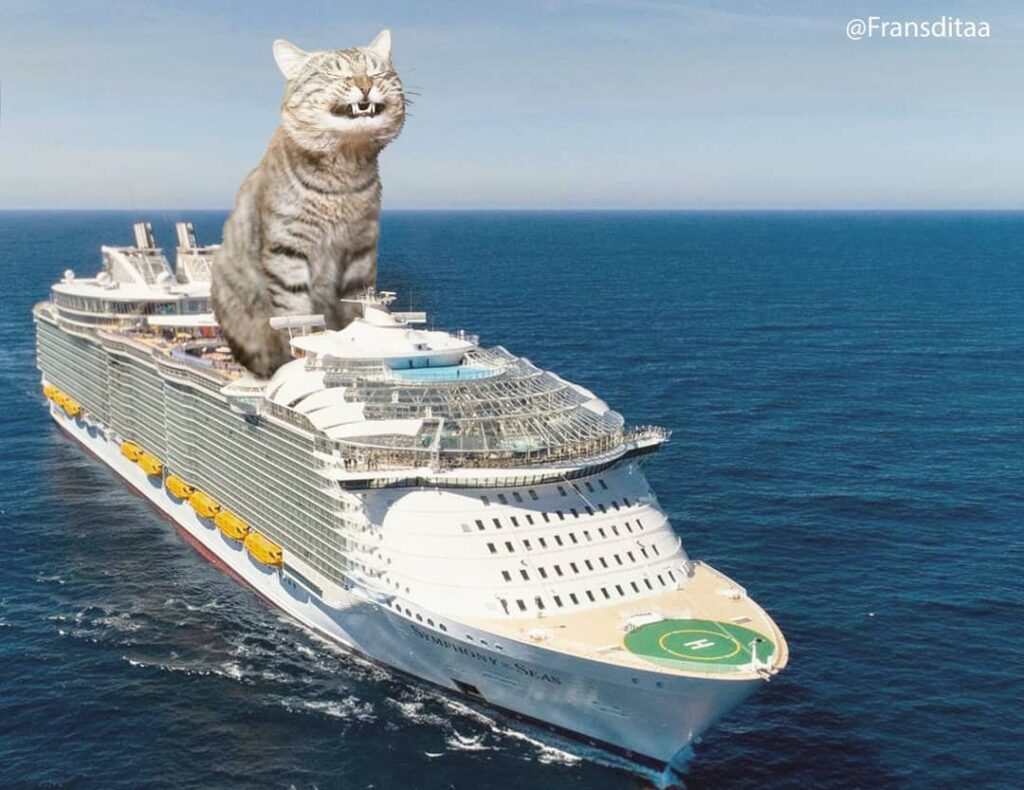

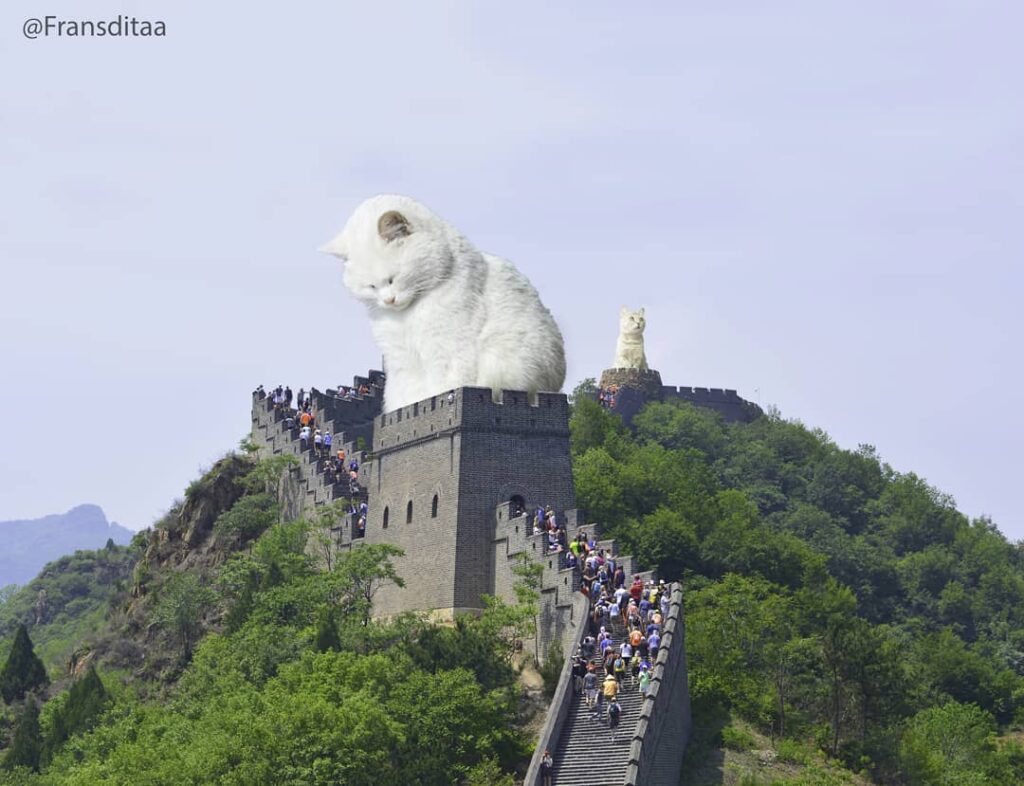

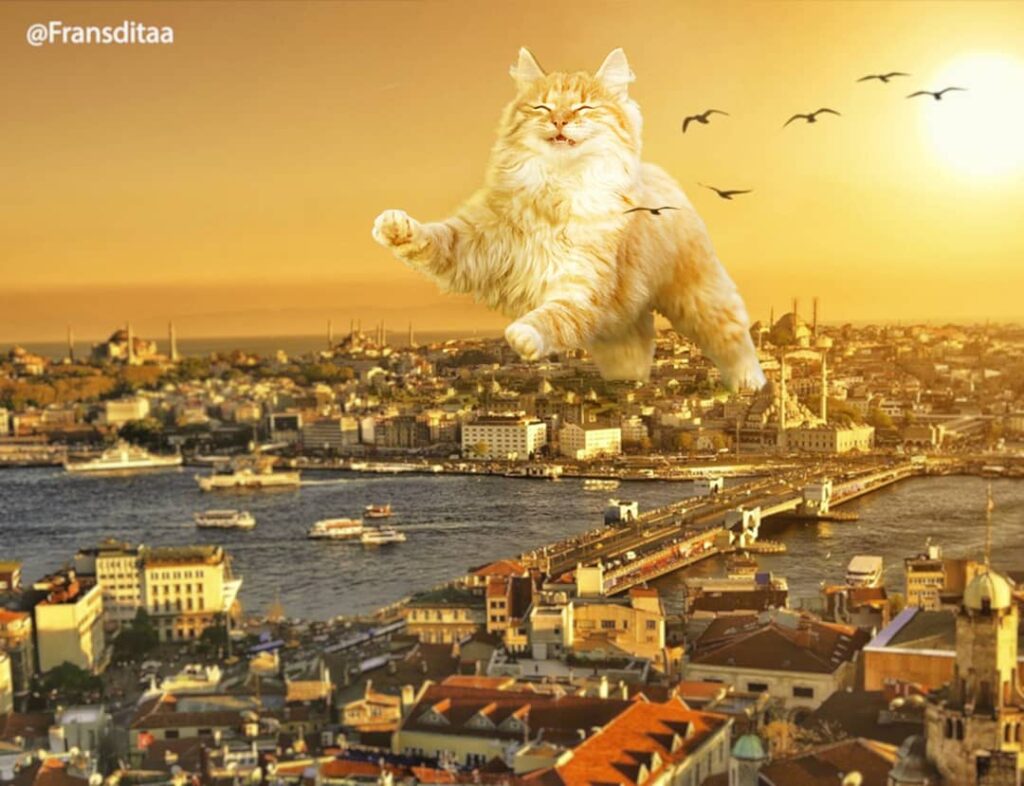
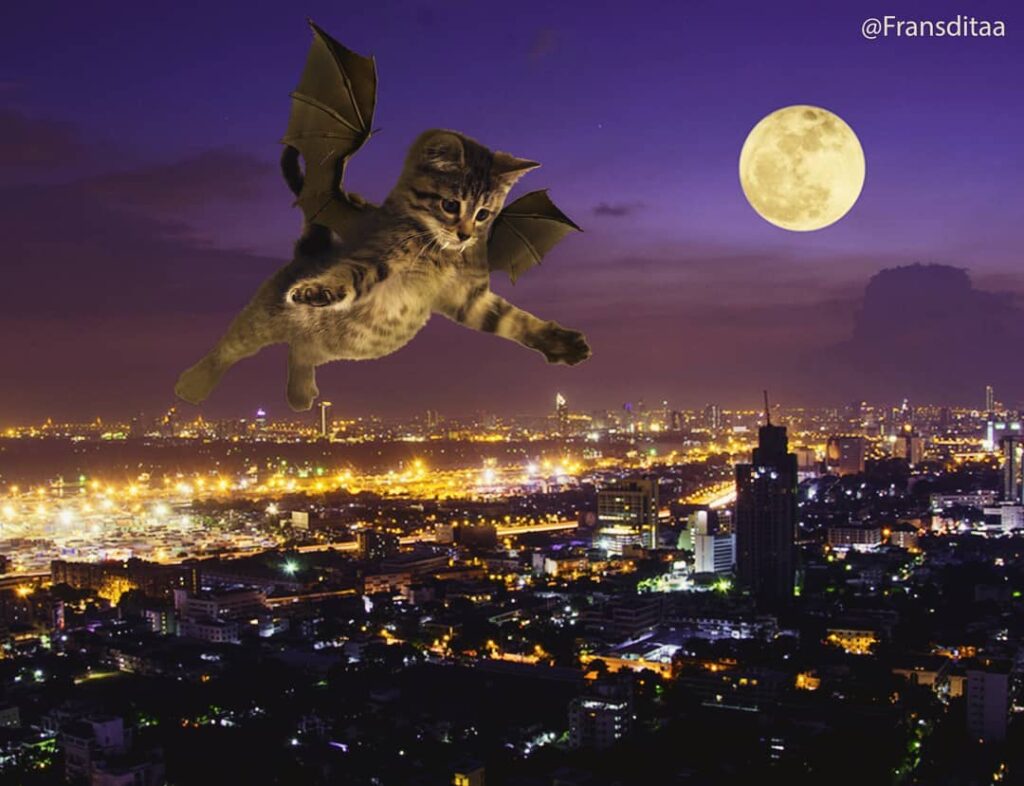
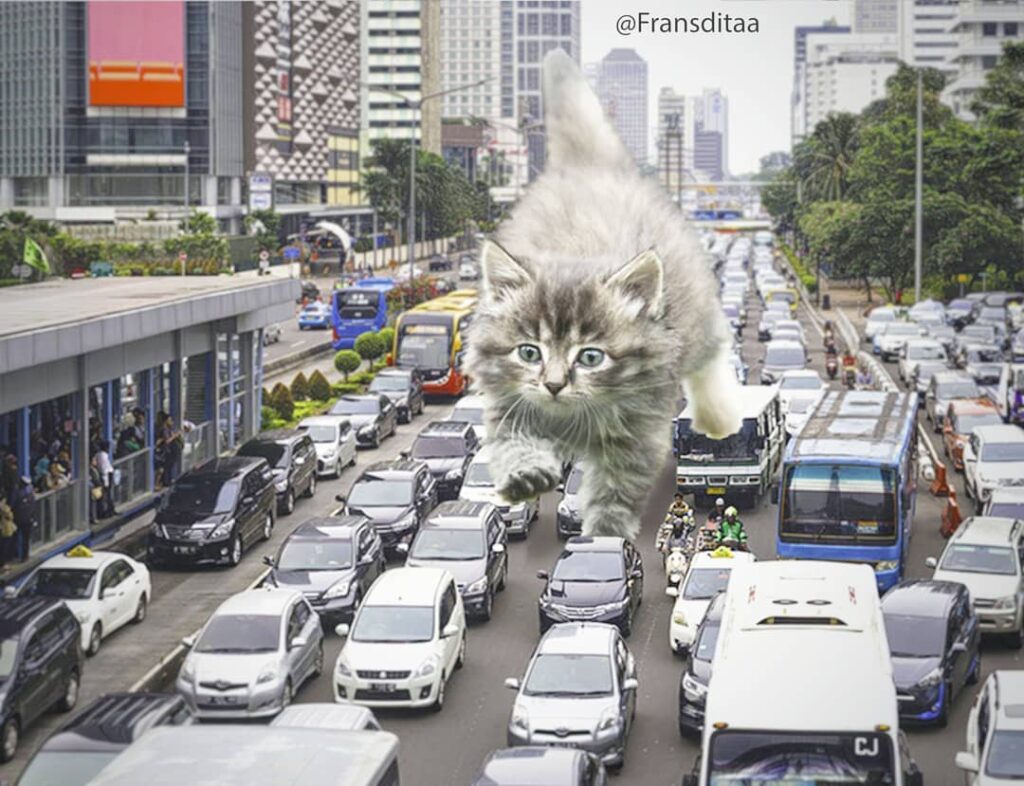





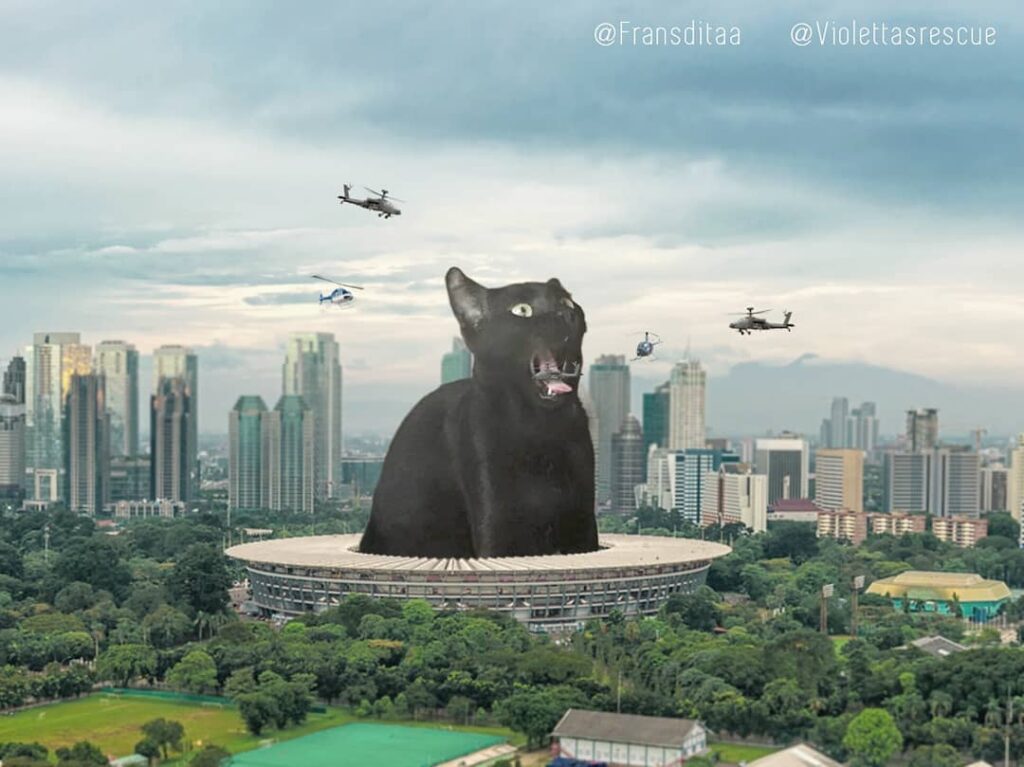

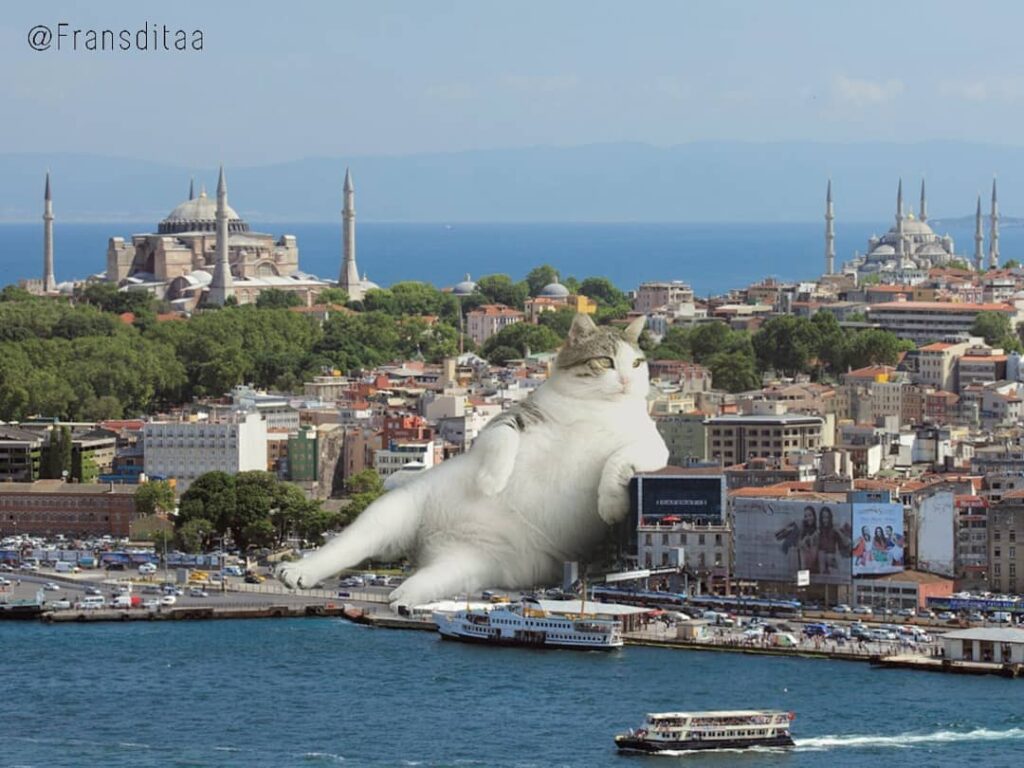
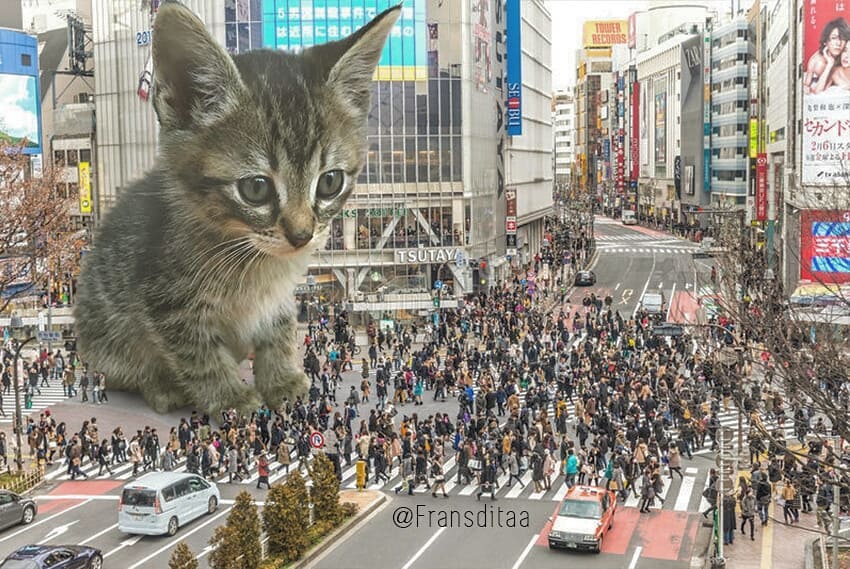
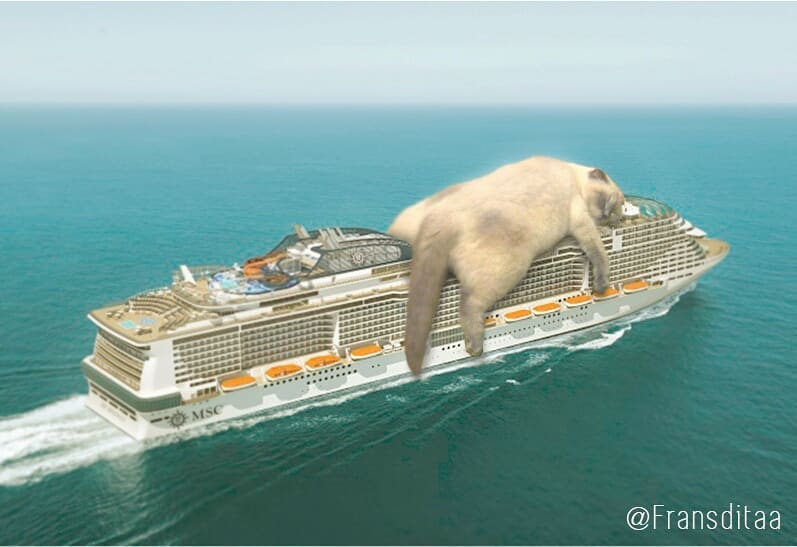
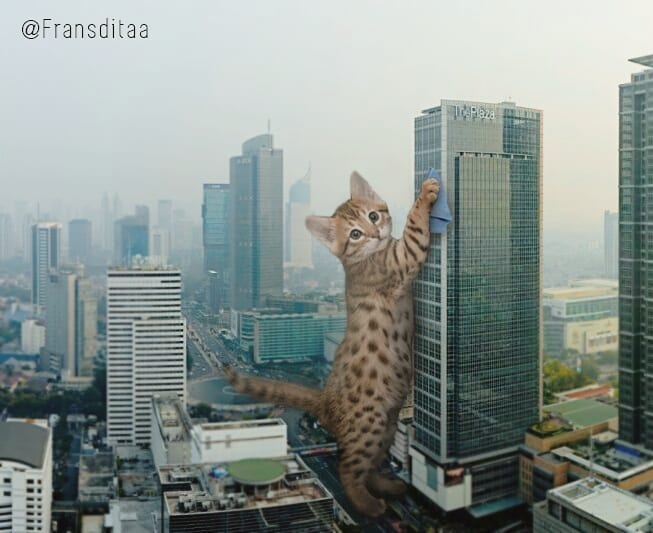

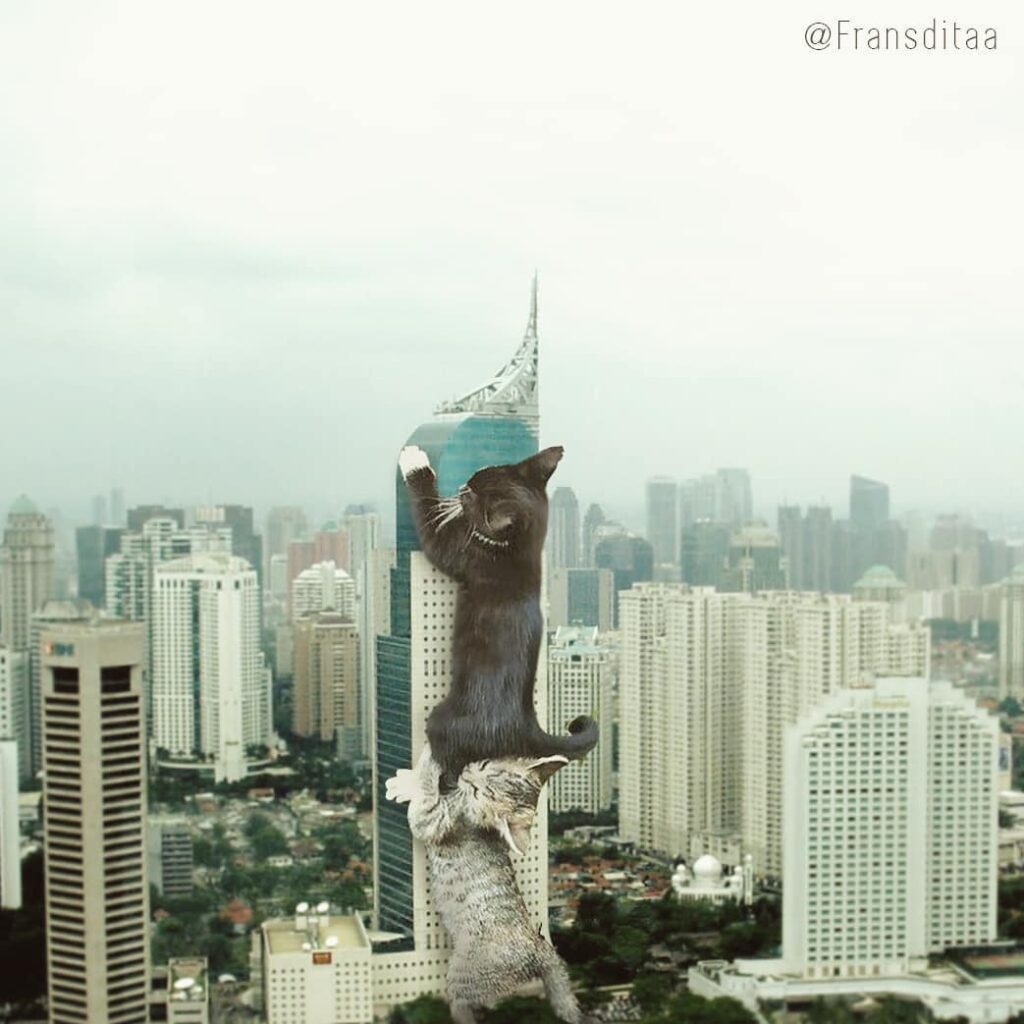

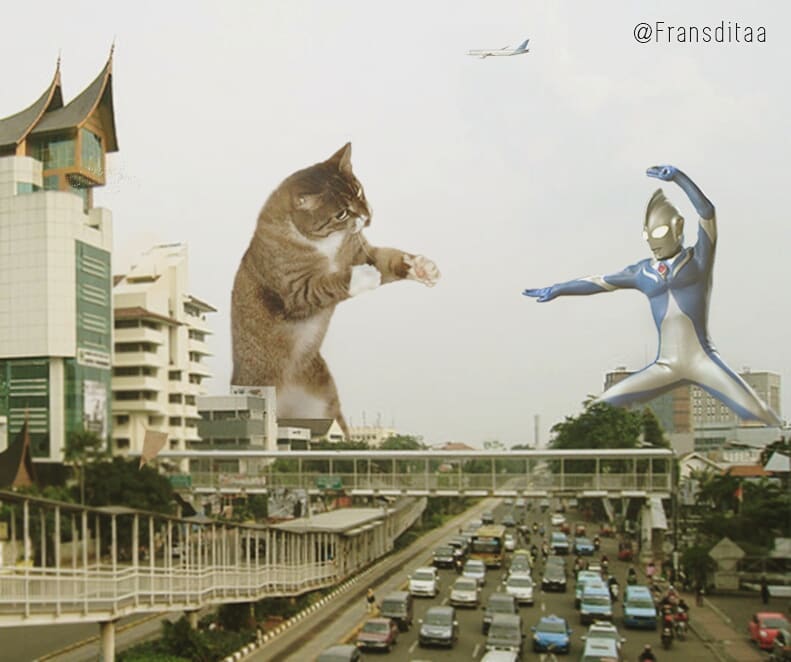
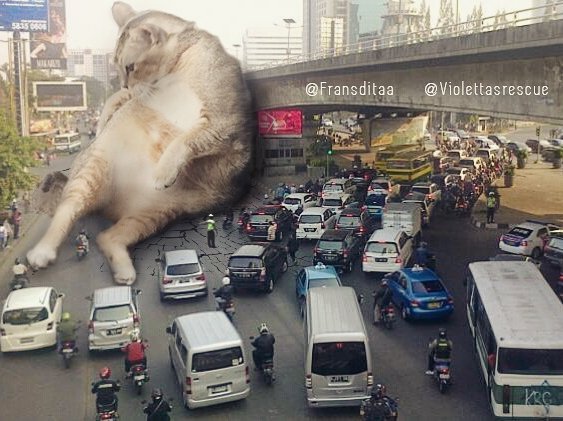

Mobsters Meeting At Satriale’s – The Sopranos HD
What are some possible explanations for why China’s economy seems to be strong and resilient despite its large debt problem? How can we accurately measure its economic strength?
There is NO DEBT PROBLEM
Because China and Chinese Companies raises most of its money by issuing debt , the debt looks high
In USA, Private entities issue Equities or Shares where they share the risk with the investors. They issue various dubious instruments to raise money and capital and get wall street to urge pension funds and insurance companies to invest money into the same dubious instruments
In India, Private entities raise capital from Bank Loans and Bank Financing which isn’t counted as Debt
In China, the public are protected and entities raise capital through DEBT or Bonds and thus the debt looks very high
Still the key in China is A S S E T S
For every Yuan Debt, the borrower has assets
Land, Resources, Tecnology, Core Technology, Derived Technology etc
So China is in no trouble whatsoever
If you take the total amount that US entities and the Federal Government of USA and State Governments have borrowed through equities, bonds, other instruments it is $ 110 Trillion
US GDP is around $ 24 Trillion
So US has around 4.5 times more borrowings floating around in its economy than its GDP
Guess how much of these borrowings are backed by solid assets?
The Answer : 10.45%
This means almost $ 99 Trillion is being floated based on PAPER VALUES
Now Compare China
China and it’s Institutions combined owe a total of CNY 272 Trillion
China’s GDP is around CNY 120 Trillion
Thus China has only around 2.3 times more borrowings floating around its economy than its GDP
Guess how much of these borrowings are backed by Solid Assets?
The Answer : 150% almost
Good Old Socialism Zindabaad.
All the Land, Coal, Rare Earth’s, Manufacturing, Gold Mines, Oil Reserves back this debt , railroads, technology back this debt
Almost CNY 370 Trillion worth of assets back this debt
That’s still only around 60% of China’s Wealth
So even in the worst disaster — China can still secure it’s entire debt while US will be unable to secure 90% of its debt with assets
So China is immensely more powerful than USA — Economy wise
People keep harping on this debt because they slyly don’t mention how much US debt is backed by nothing but PAPER and more PAPER
Their assumption is US paper is beyond doubt
It’s part of the Western Propaganda
CHINA IS EXTREMELY STRONG ECONOMY WISE
They can take their debt upto 350 Trillion Yuan at least before they decide to be cautious
Before you ask, India
India has a total borrowings of ₹ 339.81 Lakh Crore which is only 1.38 times the GDP which is almost half of China’s and a fourth of the USAs
Of these again a lovely and wonderful 116% is backed by Assets or around ₹ 375 Lakh Crore of Assets
Again Socialism Zindabaad
Sopranos and Lupertazzi’s Sitdown to discuss Ralph – The Sopranos HD

By Alastair Crooke
China and Russia are joining hands militarily. This will portend a strategic paradigm change that may force a U.S. re-consideration of the way ahead.
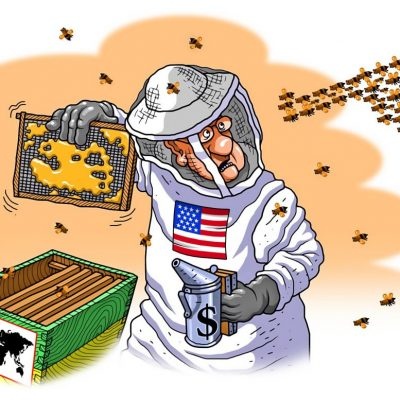
The sense that things are bad, and getting worse, is palpable.
There is an undeniable eschatological tint to today’s zeitgeist. Spiralling geo-political factors all suggest extreme turbulence ahead.
Biden and the Democrats discover – to their surprise – that they are in a ‘bind’: Having thought to run in 2024 on ‘the Biden economic record’, Biden’s Team finds prospects dissolving in the face of accelerating events.
And Ukraine – which was to be precursor to the toppling of Russia per se – looks more likely to descend into débâcle. With defeat on two fronts (the financial ‘war’ and diplomatic) already established, and with the Ukrainian entity now incrementally atrophying under Russian military attrition on yet another front, Washington frets whether or not to run a Ukrainian offensive at all – fearing it might seal a Ukrainian catastrophe.
Kiev hears Washington’s equivocation on the likely outcome of the Ukrainian offensive; Kiev understands too that this could mean ‘curtains’ for the Zelensky ‘project’ – were Biden to decide that it is time to draw a line under it, and to complete the pivot to China. It would mean literally ‘the end’ for most of the Kiev leadership.
The change in strategy is already evident: John Kirby (Sullivan’s spokesperson) has been brandishing highly exaggerated Russian losses in Bakhmut / Artyomovsk. At the same time that he suggests that though Russia somehow may seem to be ‘winning’, in reality it has been defeated. Blinken followed up on this theme the following day with ‘Russia has failed in its objective to erase Ukraine’, and therefore, has ‘lost’ – having failed to achieve its objectives.
Clearly, Team Biden are falling back onto a Pyrrhic victory for Russia ‘narrative’, with Ukraine’s survival cast as ‘mission accomplished’.
The consequence was predictable: with a U.S. ‘exit’ apparently looming, some major provocation (i.e. the drone attack on the Kremlin) was to be expected. ‘Someone’ clearly is desperate to trigger a Russian overreaction that would, in turn, force the West to move to full war against Russia.
At time of writing, the details of who might be responsible for the Kremlin attack are unknown. There is however deep, passionate anger in Russia. The Kremlin must acknowledge this public sentiment. And there will be a response; but at the same time Moscow will not want to play into the provocateurs’ agenda. (9 May marks the Russian victory in the war against Nazi Germany. They will not want the day disrupted).
Faced with a prospective Ukraine imbroglio; with inflation spiking; a recession looming; a run on the banking system; and low poll ratings, ‘Team Biden’ seemingly has a plan.
It is the re-making of Biden as a ‘War President’, through mobilising America to take-down China, whilst the Establishment believes America may still have the (conventional military) edge.
The Pentagon ‘war-gaming’ reportedly implies the U.S. to have a chance before China becomes fully war-prepared.
Seems bizarre?
Well, the other ‘fronts’ (inflation, the financial bubble, recession, unaffordable medication and education) simply have NO solution.
They are deep structural problems.
America today is a place where most everyone recognizes the problems, but where veto power, entrenched interests, and ‘Uniparty’ domination in Congress forecloses on any attempted reform.
Trump tried to break the stasis, but failed.
Biden would fail, too, if he tried.
So, if solving America’s problems is ‘the problem’, then becoming a ‘War President’ conceivably could be seen as the ‘solution’.
Of course, since western societies today cannot look truth in the eye, the West must emerge as the ‘victim’ of events, and not the author of its plight; thus paving the justification for war. And to ensure this narrative sticks in the public domain, preparatory warning shots have been fired towards the mass media to ‘stay on team’.
“Great Power rivalry, and the competition for diminishing resources – are but old realities reborn”, Robert Kaplan warns
. “Their return is the revenant of history that now defines a present of increasing peril and uncertainty”.
“The world situation is similar to that in the run-up to 1914. New technologies have not overcome rivalry over scarce natural resources, only shifted its focus”, Philosopher John Gray writes
…
A new version of the late-19th-century Great Game is afoot. The two world wars were in part driven by a need for oil. Western societies’ belief that options can always be expanded by human agency has been a central feature of the western political project – and of progressive liberalism too, writes Professor Helen Thompson.
She continues that “… missing is the fact that technology cannot create energy [at least of the type that modern society needs]. This human agency conviction has long proved overly-sanguine. Those who assume that the political world can be reconstructed by the efforts of human Will, have never before had to bet so heavily on technology over [fossil] energy – as the driver of our material advancement”.
Aahh – Professor Thompson lets the cat out of the bag.
This hugely risky ‘war bet’ – i.e. that our complex societies can be increasingly run on Green Tech, rather than ‘19th Century natural resources’ – is a gamble, brought on, Thompson suggests, “by an underlying mood of existential dread, a nagging suspicion that our civilisation may destroy itself, as so many others have done in the past”. (Hence the impulse to reassert domination – even at the price of accelerating a possible western self-suicide).
Her point is that the general cultural zeitgeist is trending towards the hopeless and nihilistic.
Yes – but who was responsible for the West needing to place this bet for its future on technology over energy?
Europe had a cheap, reliable supply of energy until it threw in its hand with the U.S. and European neo-cons’ plans.
The western ‘golden age’ was tied to zero interest rates and zero inflation.
There were decades of near zero inflation precisely because of cheap manufactures coming from China and cheap energy from Russia. Now the West faces the demon of inflation and higher interest rates ravaging its financial system. It was its choice.
Oh yes; the ‘narrative’, as Robert Kaplan explains , is that “fate is ultimately in the hands of human agency. But human agency need not have positive outcomes. Individuals such as Putin and Xi are human agents, who have caused a vast and bloody war in Ukraine – and are driving Asia toward a high-end military conflict over Taiwan”. Oh – so Ukraine and Taiwan have nothing to do with the neo-con project to extend U.S. hegemony into a new era?
Unable to address issues honestly, this collective of western intellectuals base the justification for a future China war on the premise that Putin, without due cause, simply chose to invade Ukraine on 24 February 2022, and that Xi is guilty of the intent to invade Taiwan – for which the West must properly respond by ‘maximally’ stockpiling weapons in Taiwan.
This justification is as mendacious as was the justification for the Iraq War.
Preparations for this war are ramping: More weapons in Taiwan; U.S. Special Forces conducting exercises for their infiltration into Taiwan in wake of any Chinese take-over (presumably to launch a guerrilla insurgency).
And as Andrew Korybko relates , the U.S. is rounding up allies in the Asia Pacific: South Korea has authorised nuclear armed U.S. submarines to dock at its ports;AUKUS is being strengthened; Japan is unofficially aboard; and Indonesia and the Philippines are under U.S. pressure to do their part.
In counterpoint to the usual play-book of rounding up allies ahead of a possible conflict, the EU High Representative, Josep Borrell, is proposing that the EU bloc’s navies patrol the Taiwan Strait . This came just several weeks after NATO Secretary-General Stoltenberg declared that “We are now stepping up our cooperation with our partners in the Indo-Pacific: Japan, South Korea, New Zealand and Australia.”
“The indisputable trend is that the U.S.’ European partners are poised to play a larger military role in the region, including a provocative one if they end up patrolling the Taiwan Strait”, Korybko writes.
The EU’s Von der Leyen and the EU is involved too – her name was mentioned three times in Jake Sullivan’s ‘New Washington Consensus’ speech in which the entire trend of policy, since the Reagan years, is scheduled to be reversed – from a return to protectionism; to central government intervention in support of industrial policy; to a bold investment in capacity-building;‘resilience’ and the re-appropriation of internal supply chains.
This is not however a true blueprint for reforming the U.S. economy – though it is billed as such.
True reform would require huge structural change.
It is all about re-orientating the economy for possible conventional war with China. (One lesson from the Ukraine conflict has been that industrial capacity matters). It is likely too, a pretext for increased fiscal spending (money printing) in the run-up to the 2024 Election.
Inevitably, those in the EU who are allied with the German ‘Greens’ and Von der Leyen are in ecstasy.
Officials in Brussels were talking about the “Biden-Von der Leyen ticket” (as if she were a U.S. Vice-Presidential candidate on the Democratic ‘ticket’!),and gushing about a U.S.-EU power alliance extending up to 2028!
What to make of these shifts?
To repeat: Biden is in a ‘bind’ and his Team is floundering.
It is hugely premature for the White House to call ‘mission accomplished’ on Ukraine – but what else can they do?
War with China will not be with China alone, but likely will be with Russia too. This surely was the essence of the Chinese Defence Minister’s four-day visit to Moscow (including a personal session with Putin).
The message was clear enough: China and Russia are ‘joining hands militarily’. This will portend a strategic paradigm change that may well force a U.S. re-consideration of the way ahead – or not.
Why I gave up on the AMERICAN DREAM – and you should too
By Finian Cunningham
May 15, 2023
Taiwan is facing the curse of being an ally of Uncle Sam in the same way that Germany and the rest of Europe have.
Taiwan has been obliged to give its American ally an extraordinary warning: don’t even think about blowing up our semiconductor industry.
The warning follows growing calls by U.S. politicians and military analysts that Washington should destroy the island’s vital technology sector in order to purportedly prevent China from gaining control of lucrative exports and as a way of damaging China’s economy.
Congressman Seth Moulton is the latest American voice airing such drastic action. Referring to the Taiwan Semiconductor Manufacturing Company, Moulton said that the U.S. should “make it very clear to the Chinese that if you invade Taiwan, we’re going to blow up TSMC.”
TMSC is the world’s biggest manufacturer of semiconductors. It is a major supplier to mainland China of hi-tech chips that are, in turn, critical for a wide range of Chinese manufacturing and export industries.
Previously, it was reported that the U.S. Army War College suggested that Washington should plan “scorched-earth” tactics that could render Taiwan “not just unattractive if ever seized by force, but positively costly to maintain.”
Taiwan has reacted furiously to these unilateral American calls for sabotage. The island territory’s defense chief Chiu Kuo-cheng slammed the U.S. tough-talking, saying “the [Taiwanese] armed forces would not tolerate the destruction of any Taiwanese facility”.
The projected bombing of Taiwan’s vital semiconductor industry echoes how the U.S. blew up the Nord Stream gas pipeline last September. The pipeline under the Baltic Sea was part-owned by Germany and Russia, to deliver natural gas to fuel the German and European economies.
The decision to sabotage Nord Stream was taken by U.S. President Joe Biden, according to excellent investigative reporting by Seymour Hersh. The purpose of that act of terrorism was to cut Germany and Europe off from Russian energy exports, to be replaced by more expensive American gas. That strategic objective of displacing Russia from Europe’s energy market has been a recurring issue for successive U.S. administrations over many years.
Months before the Baltic Sea pipeline was blown up by U.S. navy divers, Biden had bragged that the facility would be terminated. He did not specify how, but he vowed that “it would not go ahead”. Biden made his blatant threat in front of German Chancellor Olaf Scholz during a press conference at the White House. Evidently, America’s NATO ally Germany was not even consulted about the sabotage plan.
A similar arrogant attitude is now on display towards America’s other ally Taiwan.
Washington is evidently toying with the idea of blowing up the island’s tech industry as a way to damage mainland China’s interests. Like Germany, Taiwan is revealed to be nothing more than a pawn, in America’s geopolitical machinations.
Destroying Taiwan’s lead role in the global semiconductor industry would have the additional advantage of putting U.S. companies in pole position.
Ostensibly, the U.S. had repeatedly vowed to “defend” Taiwan from what it calls “China’s aggression”. Washington has pumped the island with billions of dollars of American weaponry under the pretext of “protecting” it from China’s claims of sovereignty.
Under international and U.S. law, Taiwan is recognized as an integral part of China under the so-called One China Policy. However, Beijing accuses Washington of meddling in its sovereignty by fomenting separatist politics in Taiwan.
China’s President Xi Jinping has warned the U.S. that Taiwan is its “first red line” that must not be crossed. Beijing reserves the right to use military force to fully unify the territory if Washington continues to stoke tensions and promote a declaration in Taipei of Taiwanese independence.
Underlying America’s seemingly chivalrous claims of “defending” Taiwan are geopolitical selfish interests.
The Biden administration has imposed unprecedented export bans on semiconductor technology to China. The U.S. wants to curb China’s economy for its own gain and to hamper the development of a multipolar global economy. U.S. dominance and its dollar hegemony are threatened by China’s growing economic power.
Blowing up Taiwan’s semiconductor industry is evidently being considered as a way to cripple China which is reliant on exports of this essential technology for its industries.
The analogy with Germany and the Nord Stream gas pipeline is that Washington is aiming to damage a rival, Russia, as well as its European allies for its own strategic benefit. The sabotage of Russian-European energy trade has led to severe economic impacts on Germany and the rest of Europe. Some commentators refer to the “deindustrialization” of Europe caused by the loss of affordable Russian gas fuel. This shock treatment has been imposed on European “allies” by its supposed American “protector”.
The war in Ukraine and the dramatic escalation in hostility towards Russia from European governments has served American strategic interests from bonanza selling of weapons and expensive gas, as well as giving Washington a renewed dominance over European relations.
The same reckless, criminal arrogance of blowing up Germany’s Nord Stream pipeline is being shown in the way the Americans are talking brashly about blowing up Taiwan’s vital tech industries.
It should be obvious that Washington doesn’t have allies, only interests. When the chips are down, so to speak, America’s allies will be unceremoniously thrown under a bus or, worse, thrown into an inferno of war.
Taiwan is facing the curse of being an ally of Uncle Sam in the same way that Germany and the rest of Europe have.
The Sopranos – Christopher And Silvio Talk To Hitmen
Social Security Payments May Be “Interrupted” if US Defaults on Debts by June 1
With the odds of a U.S. debt default increasing, Social Security advocates warn beneficiaries they should be prepared in case their payments are interrupted.
Negotiations around whether the nation’s ability to borrow money should be expanded have been ongoing, but Congress and the White House have yet to reach an agreement on the path forward.
The impasse has placed the U.S. in a precarious financial position, and leaves some of the most vulnerable Americans at risk.
Dan Adcock, director of government relations and policy for the National Committee to Preserve Social Security and Medicare, said there is a “good chance” that in the event of a default, millions of Americans’ benefits would be disrupted.
“Seniors should be prepared if they’re financially able,” Adcock said, adding they should consider putting off discretionary purchases “so they have enough to tide them over.”
But millions of beneficiaries have no financial room to maneuver, Adcock said, noting that about 40% of Social Security recipients, which include Americans who are disabled and those who are widowed, receive 90% of their income from the safety net program. That equates to nearly 27 million people.
“Even though we’re a few weeks before a default, they won’t have enough to squirrel away to cushion for not getting their payments,” Adcock said.
Analysts suggest it isn’t certain that the government will miss payments to Social Security recipients in the event of a default. The matter would likely depend on how much cash is on hand if or when the debt ceiling is breached.
The staggered schedule of Social Security payments, which relies on an individual’s birthdate to determine which part of the month they receive them, means not all beneficiaries would be equally affected in a missed or partial-payment scenario.
The White House and House Republicans remain at odds after meeting on Wednesday to discuss a resolution to the impasse. NBC News Capitol Hill correspondent Ali Vitali reported the meeting was “tense.” Led by House Speaker Kevin McCarthy, the GOP seeks spending cuts from President Joe Biden in exchange for an agreement to raise the debt ceiling and avoid a default.
On Thursday, the White House said a scheduled follow-up meeting had been postponed.
Wisconsin-Style French Onion Soup
While you might imagine French onion soup in a Parisian brasserie, Wisconsin-Style French Onion Soup is the ultimate at-home meal to soothe your worries and warm your soul from the inside. Stacked high with sweetly caramelized onions, crusty bread and piles of melted cheese, it’s hard to imagine anything better.

Active time: 40 min | Yield: 8 servings, 1 cup each
Ingredients
- 5 tablespoons butter, cubed and divided
- 3 pounds medium onions, halved and thinly sliced
- Salt and pepper
- 1 teaspoon granulated sugar
- 12 ounces lager beer
- 4 cups (1 quart) beef broth
- 8 ounces pretzel rolls, buns or bread, cubed
- 10 ounces Blaser’s Mild Wisconsin Brick cheese, shredded (2 1/2 cups)
Instructions
- Melt 4 tablespoons butter in a Dutch oven over low heat. Add onions; cook, covered, for 15 minutes, stirring occasionally.
- Season with salt and pepper. Stir in sugar. Cook, uncovered, over medium heat for 35 to 40 minutes or until onions are deep brown, stirring frequently.
- Gradually stir in beer; allow soup to boil. Reduce heat; simmer, uncovered, for 2 to 3 minutes.
- Stir in beef broth. Bring to a boil. Reduce heat to medium-low. Simmer, uncovered, for 25 to 30 minutes longer or until broth is slightly reduced, stirring occasionally.
- Meanwhile, heat oven to 400 degrees F.
- Melt remaining butter; toss butter with pretzel bread on a 15 x 10 inch baking pan. Season with salt and pepper. Bake for 5 to 7 minutes or until bread is toasted, turning once.
- Ladle soup into eight ovenproof serving bowls. Top each with bread cubes; sprinkle with brick.
- Broil 3 to 4 inches from the heat for 2 to 3 minutes or until cheese is melted.
Notes
Brick cheese is a Wisconsin original. Traditional aged or German-style brick has a beige smear on its surface; the color darkens and flavor intensifies with age. Trimming the rind reduces its aroma and flavor.
Negotiation
BREAKING NEWS: UKRAINE DOWNS **MULTIPLE** RUSSIAN MILITARY AIRCRAFT — ***INSIDE RUSSIA***
Reports are screaming out of Bryansk Russia that Ukraine has downed at least five, and possibly as many as EIGHT Russian military aircraft, and did so INSIDE RUSSIA!
According to Russian Sources today has been the Worst Day in Decades for the Russian Air Force with 2 Mi-8 Transport Helicopters, 1 Su-34 Fighter/Bomber, and 1 Su-35 Air-Defense Fighter being Shot Down over the Bryansk Region of Western Russia by what is claimed to have been either Air-to-Air or Surface-to-Air Missiles which were Launched from Inside of Ukraine.
Pilots of the 4 Aircraft were killed in the Explosion and/or subsequent Crash.
Three of these are confirmed by local sources, with video.
The AA Missiles are likely from a US Patriot Missile System or French SAMP-T complex hidden somewhere in the city of Chernihiv.
In addition, the Ukrainian SU-24 that launched the missiles against Luhansk, and one of the two SU-29’s escorting were shot down yesterday – allegedly by an S-400.
UPDATE 12:26 PM EDT —
Russian newspaper Kommersant is the first Russian source to confirm a total of four aircraft (Two Mi-8 an Su-34, and an Su-35) were shot down.
UPDATE 12:40 PM EDT —
According to preliminary information, the helicopters lost in the sky of the Bryansk region were Mi-8MTPR-1 electronic warfare (EW) helicopters with Rychag-AV active jamming stations installed on board.
The Rychag-AV complexes were created to interfere with the guidance stations of air defense systems and enemy aircraft, preventing the use of anti-aircraft and aircraft missiles at a distance of more than a hundred kilometers. However, today the Mi-8MTPR-1 turned out to be too close to the border.
Most likely, the EW helicopters were engaged in providing the strike of the Su-34 bomber on the next target in the Chernihiv region, and the Su-35 fighter covered.”
RUSSIA DENIES ! ! !
From the Russian Ministry of Defense:
“• The claim that two Mi-8 transport helicopters, one Su-34 fighter/bomber, and one Su-35 air-defense fighter were shot down over the Bryansk region of Western Russia by missiles launched from inside Ukraine was widely circulated on social media and some news outlets on May 13.
• However, there is no official confirmation or evidence to support this claim from either the Russian or the Ukrainian authorities. The Russian Defense Ministry denied that any of its aircraft were shot down by Ukraine and said that the reports were part of a disinformation campaign.
• The only verified incident that occurred on May 13, 2023 was the crash of a Su-34 fighter/bomber in the Bryansk region due to a technical malfunction. The two pilots ejected safely and were rescued by a helicopter. The Russian Defense Ministry released a video of the crash site and the rescue operation.
• The other reports of downed helicopters and planes were either based on unverified sources, false images, or old incidents that were unrelated to the current situation. For example, some of the images used to show the wreckage of a Mi-8 helicopter were actually from a crash that happened in 2019 in Siberia. Some of the videos used to show the launch of missiles from Ukraine were actually from a military exercise that took place in 2018 in Belarus.
• The claim that Ukraine shot down Russian aircraft over Bryansk was likely part of a propaganda war between the two countries amid rising tensions and violence along their border.
HAL TURNER CONTEXT —
It is possible the Russian MoD does not have up-to-the-minute info yet. At least one of the Mi-8’s was hit by a missile; there’s video evidence of the kill.
I’m pretty sure the Su-34 was also shot down.
The interesting fact is that these planes were shot down INSIDE RUSSIA 50Km from the Ukrainian border. That means long range SAM’s, air to air ambush with US made missiles, or a squad of Ukrainian fighters with manpads crossed the border and hit the planes from up close.
We’ll find out more soon.
Another certainty is that the Russians greatly increased the number of their bombing missions, so more targets are in the air to shoot at. Yesterday alone 145 bombing sorties were performed.
Uh Oh.
Best of Larry, Darryl, and Darryl (part 14)
Khmelnytskyi: Two NATO Tactical Nukes in Western Ukraine Storage Hit by Cheap ‘Iranian’ Drone…Radiation Alert Over Europe
BREAKING NEWS! MUSHROOM CLOUD IN WEST UKRAINE! NATO Prepares Intervention, 24 Hrs of CARNAGE
By Colin Todhunter
It’s a lose-lose situation for Ukrainians. While they are dying, financial institutions are insidiously supporting the consolidation of farmland by oligarchs and Western financial interests.
So says Frédéric Mousseau, Policy Director of the Oakland Institute, an independent think tank.
Depending on which sources to believe, between 100,000 and 300,000 Ukrainian soldiers (possibly more) have died during the conflict with Russia. That figure, of course, does not include civilian casualties.
But it is not the purpose of this article to explore these issues. Much has already been written on this elsewhere. But billions of dollars’ worth of military hardware has been sent to Ukraine by the NATO countries and hundreds of thousands of young Ukrainians have died.
They died in the belief that they were protecting their nation – their land. A land that is among the most fertile in the world.
Professor Olena Borodina of the National Academy of Sciences of Ukraine says:
Today, thousands of rural boys and girls, farmers, are fighting and dying in the war. They have lost everything. The processes of free land sale and purchase are increasingly liberalised and advertised. This really threatens the rights of Ukrainians to their land, for which they give their lives.”
Borodina is quoted in the February 2023 report by the Oakland Institute War and Theft: The Takeover of Ukraine’s Agricultural Land
, which reveals how oligarchs and financial interests are expanding control over Ukraine’s agricultural land with help and financing from Western financial institutions.
Aid provided to Ukraine in recent years has been tied to a drastic structural adjustment programme requiring the creation of a land market through a law that leads to greater concentration of land in the hands of powerful interests. The programme also includes austerity measures, cuts in social safety nets and the privatisation of key sectors of the economy.
Frédéric Mousseau, co-author of the report, says:
“Despite being at the centre of news cycle and international policy, little attention has gone to the core of the conflict — who controls the agricultural land in the country known as the breadbasket of Europe. [The] Answer to this question is paramount to understanding the major stakes in the war.”
The report shows the total amount of land controlled by oligarchs, corrupt individuals and large agribusinesses is over nine million hectares — exceeding 28% of Ukraine’s arable land (the rest is used by over eight million Ukrainian farmers).
The largest landholders are a mix of Ukrainian oligarchs and foreign interests — mostly European and North American as well as the sovereign fund of Saudi Arabia. A number of large US pension funds, foundations and university endowments are also invested in Ukrainian land through NCH Capital – a US-based private equity fund, which is the fifth largest landholder in the country.
President Zelenskyy put the land reform into law in 2020 against the will of the vast majority of the population who feared it would exacerbate corruption and reinforce control by powerful interests in the agricultural sector.
The Oakland Institute notes that, while large landholders are securing massive financing from Western financial institutions, Ukrainian farmers — essential for ensuring domestic food supply — receive virtually no support. With the land market in place, amid high economic stress and war, this difference of treatment will lead to more land consolidation by large agribusinesses.
All but one of the ten largest landholding firms are registered overseas, mainly in tax havens such as Cyprus or Luxembourg. The report identifies many prominent investors, including Vanguard Group, Kopernik Global Investors, BNP Asset Management Holding, Goldman Sachs-owned NN Investment Partners Holdings, and Norges Bank Investment Management, which manages Norway’s sovereign wealth fund.
Most of the agribusiness firms are substantially indebted to Western financial institutions, in particular the European Bank for Reconstruction and Development, the European Investment Bank, and the International Finance Corporation – the private sector arm of the World Bank.
Together, these institutions have been major lenders to Ukrainian agribusinesses, with close to US$1.7 billion lent to just six of Ukraine’s largest landholding firms in recent years. Other key lenders are a mix of mainly European and North American financial institutions, both public and private.
The report notes that this gives creditors financial stakes in the operation of the agribusinesses and confers significant leverage over them. Meanwhile, Ukrainian farmers have had to operate with limited amounts of land and financing, and many are now on the verge of poverty.
International financial institutions are in effect subsidising the concentration of land and a destructive industrial model of agriculture based on the intensive use of synthetic inputs, fossil fuels and large-scale monocropping.
Much of what is happening in Ukraine is part of a wider trend: private equity funds being injected into agriculture throughout the world and used to lease or buy up farms on the cheap and aggregate them into large-scale, industrial grain and soybean concerns. These funds use pension funds, sovereign wealth funds, endowment funds and investments from governments, banks, insurance companies and high net worth individuals (see the 2020 report ‘Barbarians at the Barn
‘ by grain.org
).
Financialising agriculture this way shifts power to people with no connection to farming. In the words of BlackRock’s Larry Fink
: “Go long agriculture and water and go to the beach.”
Funds tend to invest for between 10 and 15 years, resulting in good returns for investors but can leave a trail of long-term environmental and social devastation and serve to undermine local and regional food insecurity.
By contrast, according to the Oakland Institute, small-scale farmers in Ukraine demonstrate resilience and enormous potential for leading the expansion of a different production model based on agroecology and producing healthy food. Whereas large agribusinesses are geared towards export markets, it is Ukraine’s small and medium-sized farmers who guarantee the country’s food security.
This is underlined by the State Statistics Service of Ukraine in its report ‘Main agricultural characteristics of households in rural areas in 2011’, which showed that smallholder farmers in Ukraine operate 16% of agricultural land, but provide 55% of agricultural output, including 97% of potatoes, 97% of honey, 88% of vegetables, 83% of fruits and berries and 80% of milk.
In June 2020, the IMF approved
an 18-month, strings-attached $5 billion loan programme with Ukraine. Also that year, the World Bank incorporated measures
relating to the sale of public agricultural land as conditions in a $350 million Development Policy Loan (COVID ‘relief package’) to Ukraine. This included a required ‘prior action’ to “enable the sale of agricultural land and the use of land as collateral.”
According to the Oakland Institute:
Ukraine is now the world’s third-largest debtor to the International Monetary Fund and its crippling debt burden will likely result in additional pressure from its creditors, bondholders and international financial institutions on how post-war reconstruction – estimated to cost US$750 billion – should happen.”
Financial institutions are leveraging Ukraine’s crippling debt to drive further privatisation and liberalisation – backing the country into a corner to make it an offer it can’t refuse.
Since the war began, the Ukrainian flag has been raised outside parliament buildings in the West and iconic landmarks have been lit up in its colours. An image bite used to conjure up feelings of solidarity and support for that nation while serving to distract from the harsh machinations of geopolitics and modern-day economic plunder that is unhindered by national borders and has scant regard for the plight of ordinary citizens.
The Sopranos – Silvio And Adriana Go For A Ride
And so, by working for the FBI, she has to “go away”.



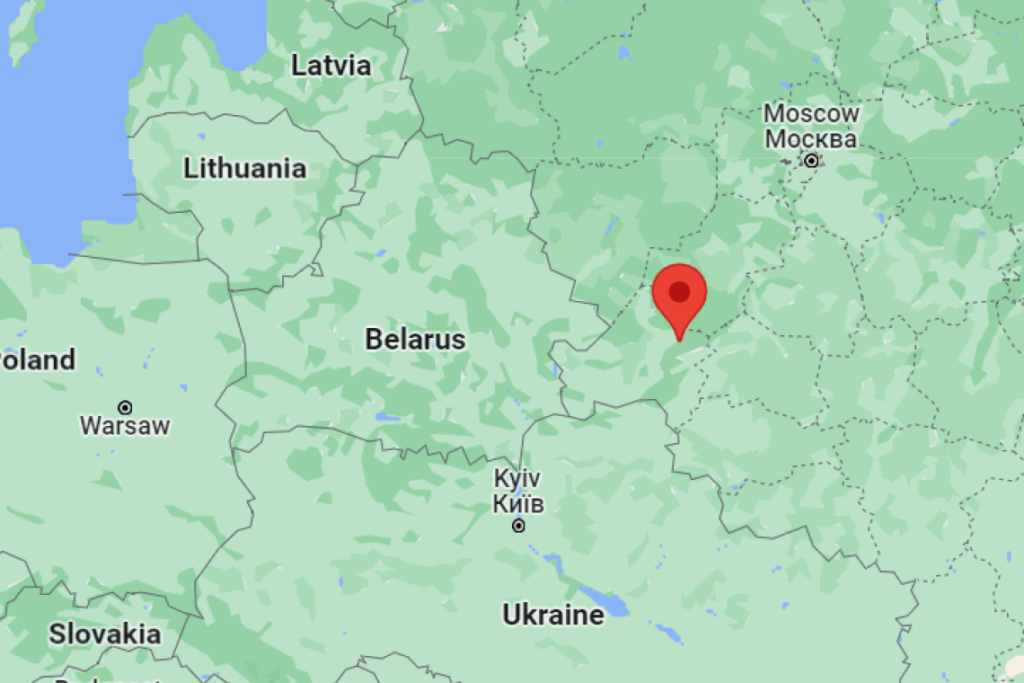
As a true crazy cat man, you must know about Cats in Space, the best space cat site of the whole internet: https://www.omgcatsinspace.com/ – enjoy!!